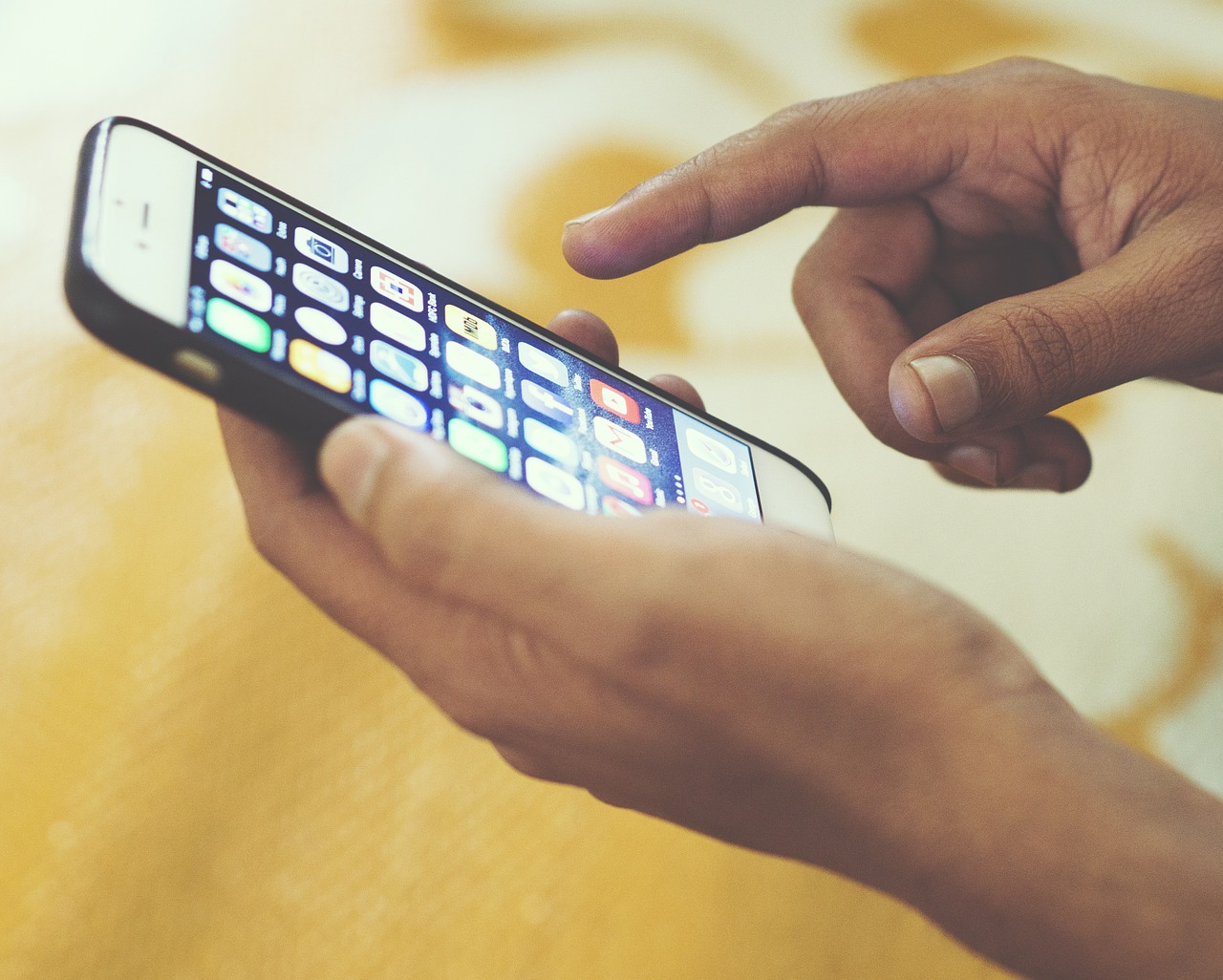A new year is just around the corner, and that means that you can expect to see some exciting new features, functions, and designs emerging in the smartphone market. Read on for a look at seven of the top smartphone trends for 2018.
-
Dual camera

There’s no question that today’s smartphone cameras are incredibly sophisticated, but they still have a few limitations that are more or less unavoidable given the size and structure of a smartphone. One of these limitations is the ability to change the aperture size like a professional camera lens—something that’s important for achieving proper depth of field (zooming) but that just isn’t possible for a smartphone camera’s fixed lens. To address this problem, more smartphone manufacturers are introducing dual lenses; that is, putting two camera lenses on the back of the phone, each with a fixed but different focal length that, when paired together, mimic the effects of a manual zoom. This hybrid solution became increasingly popular in 2017, and experts predict that even more new smartphone models will feature dual lenses in 2018.
-
Larger screen-to-body ratio
If you’ve purchased a new smartphone recently, you might have noticed that the frame around its screen, known as a “bezel,” seems smaller than it used to be. These days, the screen-to-body ratio of new phones has been steadily increasing as manufacturers look for creative ways to boost the size of what matters most on a smartphone—the display—without having to make the device itself any larger. While the largest screen-to-body ratio currently on the market is nearly 85%, a completely bezel-less phone might not be far away as more manufacturers test and implement edge-to-edge displays.
-
Under-display fingerprint sensor
Interestingly, the trend toward bezel-less phones is sparking another trend: the under-glass fingerprint sensor. Capacitive fingerprint sensors are an increasingly common feature of newer-model smartphones. Many of these are located on the bottom edge of the phone’s frame in the home button position, something that would clearly impede an edge-to-edge display. The challenge for smartphone manufacturers is therefore to create a fingerprint scanner that functions not just under glass, but under the display stacks of a smartphone screen. While this feat hasn’t been mastered on a large scale quite yet, the next generation of under-display fingerprint scanners could be hitting the market soon, with Qualcomm having produced a workable prototype (installed in a Vivo smartphone) earlier this year.
-
Iris scanners and facial recognition
 Better security is a significant concern for today’s smartphone users. Consequently, it’s a top priority for today’s smartphone manufacturers. That’s why companies are investing heavily in the latest security technologies such as iris scanners and facial recognition capabilities. Iris recognition has been proven to be one of the most accurate biometric modalities available, while facial recognition is, for many users, more convenient and practical than other security measures such as entering a complicated lock screen password. Users can expect more new smartphone models released in 2018 to feature one or both of these technologies.
Better security is a significant concern for today’s smartphone users. Consequently, it’s a top priority for today’s smartphone manufacturers. That’s why companies are investing heavily in the latest security technologies such as iris scanners and facial recognition capabilities. Iris recognition has been proven to be one of the most accurate biometric modalities available, while facial recognition is, for many users, more convenient and practical than other security measures such as entering a complicated lock screen password. Users can expect more new smartphone models released in 2018 to feature one or both of these technologies.
-
Design fine-tuning
While industry insiders aren’t predicting any drastic changes to smartphone design in 2018, they are expecting a high degree of fine-tuning. While users have become accustomed to the standard rectangular shape of smartphones, that doesn’t mean that manufacturers have stopped looking for ways to make phones sleeker and more comfortable to hold and work with. Some detail-oriented design tweaks for the year ahead include a device body that features more curves and antenna lines moving toward the edges of the display.
-
Bluetooth earbuds and headphones
The growing popularity of Bluetooth earbuds and headphones may not be a smartphone trend in and of itself, but it’s certainly a response to an increasingly common phenomenon in smartphones: no conventional headphone jack. For several years now, the use of the universal 3.5mm headphone jack for audio output has been in decline among smartphones. While the jack may be convenient for users, removing it allows smartphones to be thinner and lighter, and allows more room for critical internal hardware such as a larger capacity battery. But many replacements for the 3.5mm jack, like the iPhone’s proprietary Lightning port, have suffered from problems such as sound quality, power efficiency, and earbud compatibility. The result? A growing trend towards the use of Bluetooth-powered headphones and earbuds that don’t require a conventional jack at all.
-
Augmented reality
Augmented reality, or AR, is still a new player on the smartphone technology scene. We can expect to see much more of it in the year ahead, as its range of possible applications increases. For example, the incorporation of AR into gaming can make monsters appear on the street in front of you in your favorite smartphone games. In addition, AR applied to maps allows you to use arrows to direct you to where you need to go as you look through your smartphone’s camera. Apple’s ARKit and Google’s Project Tango are just two examples of the many AR initiatives currently in development.

